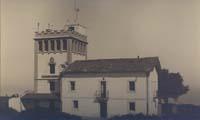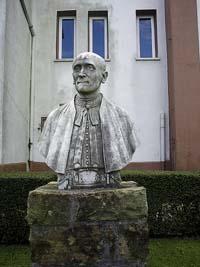One hundred years looking at time
2006/01/01 Rementeria Argote, Nagore - Elhuyar Zientziaren Komunikazioa Iturria: Elhuyar aldizkaria
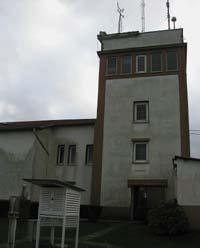
The Meteorological Observatory of Igeldo does not arise by chance. Weather circumstances have always worried man. Long ago I dreamed of knowing what time I was going to do the next day, and for that dream and the necessity, the XVIII. At the end of the 19th century and the beginning of the 19th century, numerous meteorological observatories were built in most of the world. But, as I said, Igeldo's idea did not come by chance: behind that idea there was a tragedy.
On Holy Saturday in 1876, a terrible galerna led the lives of 500 fishermen in Bizkaia and Cantabria. That tragedy shocked a 12-year-old Hernaniarra boy, Juan Miguel Orkolaga: Founder of the Igeldo observatory.
Apparently, Orkolaga's interest in time intensified markedly after that event. And he did not resign himself to the coast until weather forecasts and a warning system for storms and storms were made.
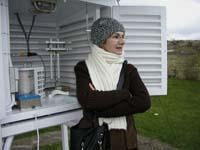
Thanks to the collaboration of the Provincial Council of Gipuzkoa that opened the Maritime Meteorology Observatory of Igeldo in 1905, on November 8 it has turned 100 years. The merit of that man could not be limited: at that time the meteorology was in the process of becoming science, but still prevailed the predictions and superstitions of the shepherds, so it had little science.
But Orkolaga was clear that the basis for predicting time was in science. To do this, he brought the measuring instruments from the outside, and also manufactured several instruments by hand --there were no approved measuring systems and each meteorologist adapted as much as possible -.
At first the tooling was quite poor: Systems Barometer of the Richard House (presented by King Alfonso XIII), kinematograph, maximum and minimum temperature thermometer and a differential Orkolaga pluviometer, a microbarometer and several mercury barometer, among others. These were simple but essential tools for collecting data that define time and make predictions.
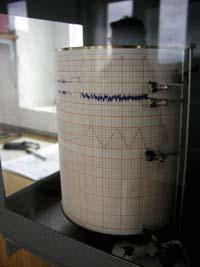
Weather in the world
By the time of Orkolaga, weather was very advanced in the world. For centuries the basic instruments of meteorology were invented: The pressure barometer invented by Torricelli in 1643, with which it was discovered that the decrease of the air pressure indicated the arrival of a storm, in 1667 Robert Hooke invented an anemometer to measure the speed of the wind, in 1714 the mercury thermometer Daniel Fahrenheit to measure the temperature and in 1780 the hygrometer of the humidity of the air Ssurbe.
The atmosphere data were first collected by Laurent Lavoisier, who measured pressure, air humidity and wind speed and direction in 1765. Lavoisier was sure that with that information he could predict the time he was going to do the next day. Therefore, weather forecasting could be done scientifically, regardless of beliefs. But to do this, a quick communication tool was needed that did not reach until 1843, when Samuel Mors invented the telegraph.
Thanks to the telegraph, weather forecasts began to be made regularly, and it was the origin of modern weather. By telegraphs, from different observatories of a territory, data of a specific nature were sent, added to them, placed on a map and knew the situation in which the data were collected. From the analysis of the evolution of these maps it was announced what was going to happen in the coming hours. The truth is that before the invention of the telegraph data were collected, but they arrived late to make predictions.
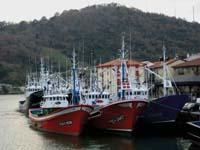
Thanks to telegraph and necessity, meteorology advanced. And in this case there is also a tragedy behind everything. The truth is that in 1854 a storm sank a warship and 38 cargo ships in the port of Balaklava in Crimea. Reviewing the records of the previous days, they found that the storm surfaced two days earlier and toured Europe.
If weather data were collected and interpreted on time, that storm could be predicted. Thus, France launched the storm alert service. And that is the event that is conceived as the origin of modern meteorology. Thanks to the telegraph, the Paris Observatory began to develop meteorological maps, which was followed in 1872 by the British Meteorology Office.
However, the main advance in meteorological predictions occurred during World War I. By then the theory of Vilhelm Bjerknes had already been approved; XX. According to this theory, published in the first decade of the 20th century, the interaction between temperate and cold air masses had a great influence over time. And the idea was imposed that time conforms to the laws of physics, which allowed to study meteorology in a scientific way.
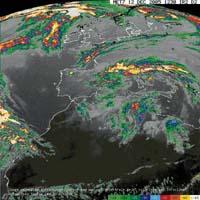
At the tip of the weather
During World War I, weather forecasts were fundamental for aircraft flights, etc. were safe. And from then on the meteorology had a constant advance. When Orkolaga presided over Igeldo's observatory, meteorology advanced greatly, as seen. In fact, Orkolaga was not a breakthrough in the investigation, but his identity continued after his death. In the early years, family and friends around Orkolaga maintained the work of the observatory. And so came the golden age of the observatory: At the time of Doporto.
Mariano Doporto was an important meteorologist, who later became director of the Irish Meteorology Service, and knew the latest advances in meteorology and wrote specialized articles. In 1927 he arrived at Doporto Igeldo at work after overcoming the oppositions. With it came the time of professional meteorologists, which allowed Igeldo to enter the World Observation Network.
Weather observations were daily and quality, and weather forecasts were made with local and World Observation Network data.
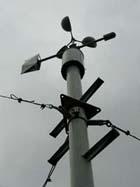
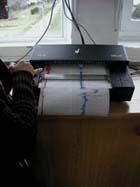
Since then, political vicissitudes have been numerous: changes in government, wars... and yet the observatory has remained. And most importantly: Data are kept from 1928 until today.
Time has not passed in vain
In this long century, the observatory has been chaired by Carlos Santamaría and Usabiaga, among others. The observatory is currently run by Margarita Martín. Eleven people have passed, eleven meteorologists and observers. Progress has been made, but work is largely done like a hundred years ago. Currently, observers receive the data rigorously and orderly every three hours -- from now on they will receive it every hour.
The data collected by observers is very useful for predicting weather, as well as analysing global climate variations. The climate series from 1928 to today is a real treasure for climatologists. In short, it is a very reliable series: since then the same tools have been used to make measurements, and the environment has hardly changed (many observatories have eaten the urban centers and the series is not useful), the residence of Igeldo continues in the same place, in the rural environment, as a hundred years ago.
Therefore, Igeldo is part of the International Basic Network and, according to Margarita Martín, "is undoubtedly one of the most important observatories of the World Meteorological Organization". But it is a little deteriorated: the building has a great humidity and it is necessary to renew it. In addition, its scientific heritage and historical heritage are unique and, therefore, it is a privileged place to open a museum dedicated to meteorology. There is no lack of intentions and desire.
